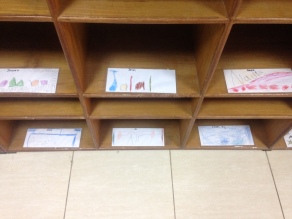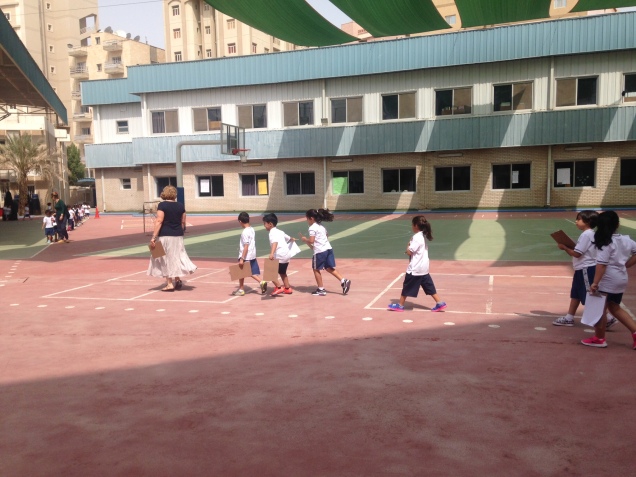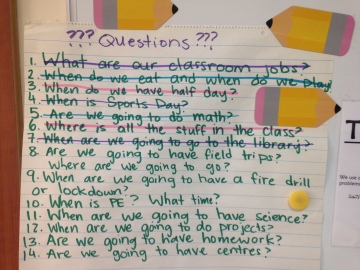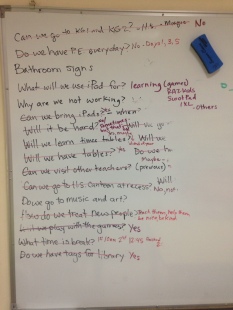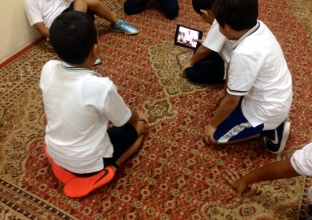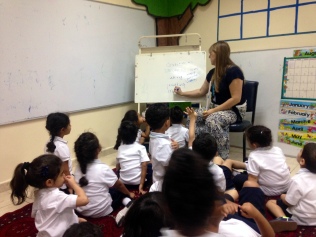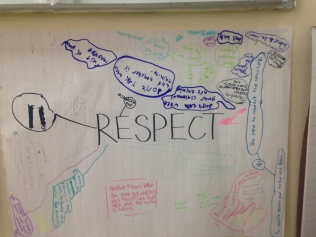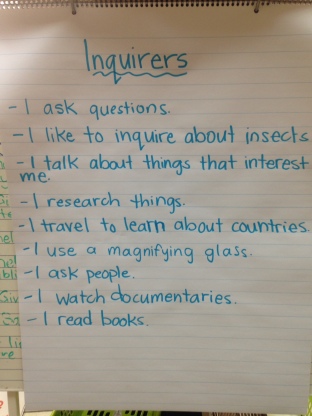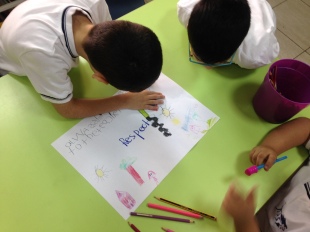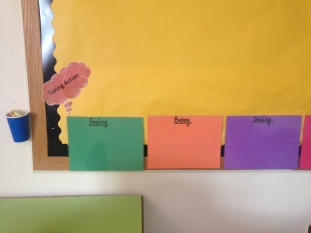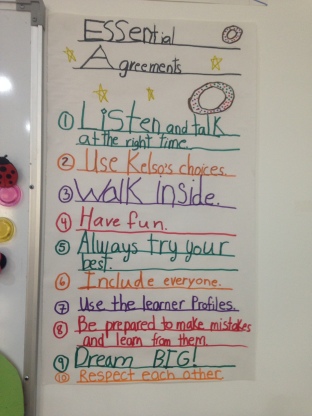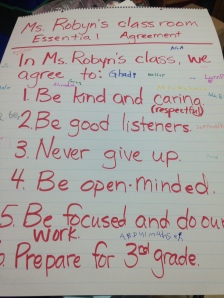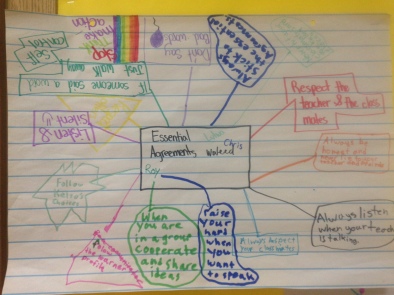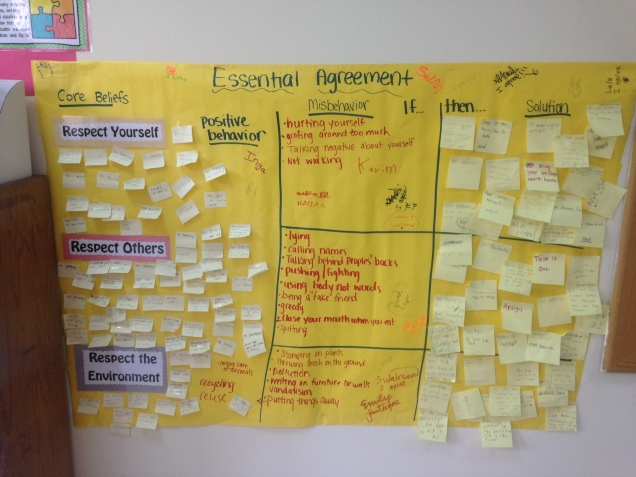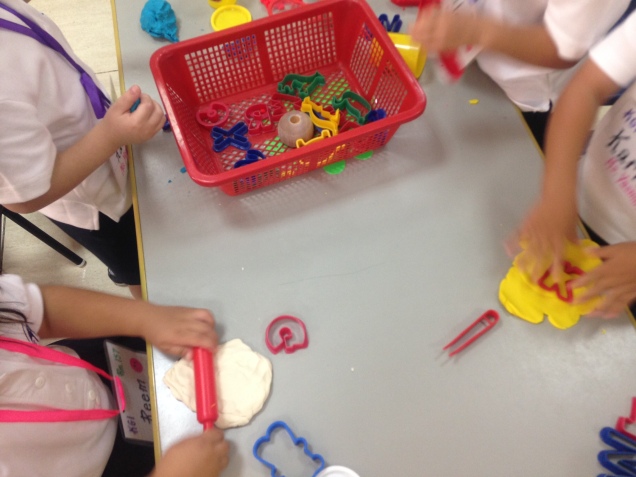Yesterday I shared my thoughts and reflections about my own practice creating a democratic community in the classroom and I promised to share my plan for next year- once I had one. Well, I haven’t been able to stop thinking about it and as a result a plan has started to take shape, so here are my initial ideas, as promised!
Classroom Set-up
In the past I would spent the summer coming up with a blueprint for my classroom set-up and then during the week before students would arrive, I would spend countless hours setting it all up on my own. This year I plan to hold off on any classroom set-up until the first day of school. Once the students arrive and attendance has been taken, we can come together for the first time as a community and together decide how we want our learning space to be set-up. From there I am hoping we can break off into task-forces (classroom library, physical set-up, boards, resources and manipulates, school supplies etc.) where I can support students in coming up with a plan, putting that plan into action and then reflecting on how things went. I have to be prepared to let go, allow the process to unfold and resist the urge to jump in and rescue or veto. Overtime, I think the natural consequences of any design flaws will appear and as a community we can come back as a group and discuss what is working and what might need to change to better serve the needs of our learning community.
Systems and Routines
This will be the hardest for me. Every year that I have taught, I have started the year with a clearly laid of plan for every routine imaginable within the teaching day. This year, I plan to come up with these systems with my students. As a community, we can brainstorm all the times in the day it would be beneficial to have a routine, and then discuss what routines they might have used in other classes. From there we can discuss the pros and cons of different approaches and vote on the ones we want to try. I think it would be helpful at this point to document the why, how and what of each routine in a visible spot somewhere in the room – perhaps with some criteria for how we will know it is working, and clues for when we might need to revisit and refine our plans.
Community Building
Obviously it is essential at the beginning of a new school year to build a sense of community and help students get to know each other. Similar to classroom set-up and classroom routines, this has been something I have spent hours in the summer planning – to the point that when I started a new school year, the first five day plans were fully filled out and ready to go! This fall I would like to develop this alongside my students. I plan to start with the why – and stimulate a discussion about why it is important to build relationships with the people in our community. From there we can dive into the question – how do humans build relationships? Hopefully this provides a long list of potential activities that we can use throughout the week to build a strong community.
Schedule
In the past I have always built our class schedule alone – without the input or ideas of my students. This year I’d like to try and build it with them. I have been given a schedule template (which accounts for all my specialist classes) but aside from those specified times I plan to leave the rest blank until the students arrive. When the students arrive I’d like to invite them to help build our class schedule. In order to make informed decisions, I think it would be important to first inquire into learning – how do people learn, why do people learn, how do other schools and classes schedule their learning. I also think at this point it would be important to be transparent about our limits and boundaries with regards to curriculum and programming. As an IB school that has adopted the Common Core, I think it is important for students to inquire into “what” they are supposed to learn and also “how” they are supposed to learn. Once students are familiar with what they are supposed to learn in Grade 4, how they are supposed to learn as IB students along with what options are out there for structuring a school day – then we can work together to design a schedule that meets our needs. Perhaps students will breakout into groups or work on their own to come up with a proposed schedule and then we can vote on which one, we as a community, like best.
Homework
In previous years as a classroom teacher I have decided what is for homework, why it is for homework and when it is for homework. When I started to think about going back in the classroom I decided that there would be no homework ever. Now that I think about that, I have realized that either way I am deciding something on the students behalf – which I would like to avoid. Instead of a blanket decision for the entire class one way or another, I have decided to open it up to a personal and family decision. Again, in order to make informed decisions I think it would be important to inquire into the different perspectives around homework (student, parent, teacher, administrator, research etc.) and share those discoveries with the parents community. From there each student, along with their parents, can decide if they want homework. Then, I can support the students who have opted for homework to come up with a personal plan – starting with why, then working out the how and what.
Conflict Resolution
When you force 24 humans to spend 5 days a week, 7 hours a day together in one room, conflict is bound to occur. And in the past when conflict has happened, I have been the judge, the jury, and the mediator. I have had a plan for how I would deal with conflicts in the classroom, but this year I want students to not only be part of the decision, but also part of the actual processes once they are decided. At first I was going to impose a model of “council meetings” like they have at Free School, shown in this documentary from minute 23-32. But then I realized making that decision on my own for them, was just as un-democratic. So instead I’d like to discuss as a class, how humans in the real world solve conflicts. I’m hoping this leads to discussion of strategies for small conflicts and also options for when people with unresolved conflicts look for extra support form the community (i.e.. mediators, councils, town halls, judiciary committees etc.). We can inquire into how humans solve conflict in the real world, then we can see how schools have adopted these practices and then finally decide as a community which one(s) we would like to have as options when conflicts arise.
Goal Setting
Usually the week before school starts I am exhausted from setting up the classroom and planning the first week of school….but since I won’t be doing any of that this year without my students I am anticipating a lot of unused time on my hands. In thinking about building a democratic classroom community, it is not only important that students have a voice, but also that parents have a voice. So I think a great use of my free time would be to invite parents in to meet with me for a pre-school year conference. I would love to sit down with parents and ask them what their goals are for their child for the year and what they would like from me in order to support those goals. I would also love to ask them to tell me about their child’s needs, interests, skills and passions. I think this would be a really great to lay the foundation for a collaborative partnership with my students’ families and also a great way to show that their voice, knowledge, opinion and perspectives are not only welcome, but also valued.
…
Thinking in this way has been a huge challenge for me. I am still very inclined to come up with these plans on my own during the summer and I actually have to force myself to stop, but becoming aware of those tendencies has helped me see more clearly the power structures that have existed in my previous classrooms. I am really excited to take this new approach and I am hopeful that the time invested to have these conversations, conduct these inquires and democratically make these decisions will lead to a really powerful and productive learning community. I know as the school year gets underway, I will need to think about how to democratically approach things like curriculum, units, assessment and reporting… but for now, I am happy with my plan in these seven aforementioned areas. And, as always, I will report back and let you know how it goes!
How do you plan to establish a more democratic classroom this school year?
How do you plan to ensure your students’ voices are equal to yours?
















